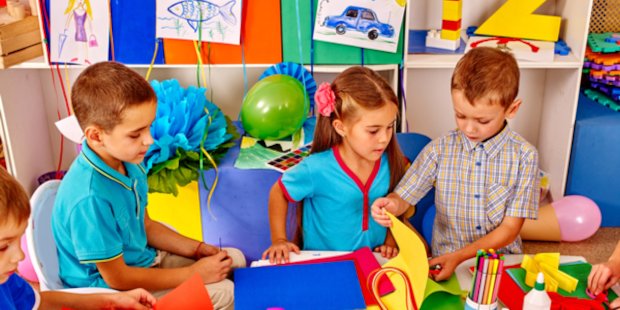What’s in your… art area?
Add to My Folder
In this series, Fe Luton explores the ways in which you can set up and run areas of continuous provision. Ideas for organisation, resources and planning are explored. This first article in the series focuses on the art area.

How should my art area be arranged?
Some children will visit your art area on a daily basis – several will not want to leave! Other children, however, you will never find in this part of your classroom; this can be due to a lack of interest or, more often than not, lack of confidence. You need to address both extremes by ensuring those who love ‘arts and crafts’, to the extent that they practically live in your art area, can experience other areas through this passion (mobile art baskets is a great way to achieve this), while trying to bolster the confidence and interest of those children who rarely, if ever, visit. This can be done either by incorporating their passions into the area through themes or materials used (painting with cars, for example) or encouraging them to take the art to other areas that interest them. Also, by providing gentle, self-serving forms of guidance or challenge, not only will children who lack confidence or skill feel supported, but you will ensure those children who have developed a high level of skill in this area are not just practising at a low level.
An art area will not only improve artistic skills. It will help with language, communication, social interaction, mathematics, investigation, physical development, problem solving and exploration of the world.
Consider the following when organising your art area:
- Make sure that there is plenty of natural light and enough space for multiple artists
- Check that the area is not too busy with colour and visual ‘noise’ as this can be very distracting
- Ensure that your storage is balanced and purposeful rather than chaotic and cluttered. And think about whether you can display your resources in a more thought provoking way such as by colour (e.g. red crayons with red pencils next to the red paint and red collage or embellishing materials etc.). Children should be able to see and access materials easily – they should also have a wide choice, not just a ‘this is what is out today’ approach
- Remember that some children may prefer to work at a tables, while others find easels more conducive
- Involve children – encourage them to help organise the area
- Be careful not to be too prescriptive and take over with a big focus on adult-led activities or prescribed instructions to create a given end product – there needs to be a lot of opportunity for independent explorations of self-expression
- Do you have a transportable art cart or handled containers that can be filled with materials and moved around the setting to enable art in all areas including outside?
- Do you have outside-specific art materials? Outdoor art will tend to use more natural materials and often be on a larger scale
- Encourage children display their artwork using pegs and clips. You could have an organic art gallery that changes on a daily (hourly!) basis
- Make sure there is somewhere to store completed work effectively (and remember not just flat pieces of paper – a clear window sill or surface are handy spaces for this)
What resources should I have in my art area?
In general, your resources need to reflect the ages and stages of the children in your setting – a summer art area should develop more complex skills than an autumn one. Ask children what they would like – this is often overlooked but children usually have great ideas for what they would like in an area and become frustrated or not interested if such things are never available.
Consider the following resources:
Paint – make sure that paint is made up and accessible on a daily basis. It can be in pots with lids or palette trays. Ensure that you have an array of paint types available – watercolours, poster paint, child-friendly acrylics etc. Encourage children to mix their own paint colours then store and label them in sealed jars for all to use – children could name their own paint colours.
Paint brushes – have a wide array available rather than the same size for everything.
Pencils, crayons and felt tips – have a wide array available (fat and thin, as well as a good range of colours) and make sure they are always sharpened and not dried out. You could give this responsibility to ‘art monitors’ who can check and highlight any issues. It can be really disheartening for children keen to use these resources if they are not in a usable state. Also make sure that you have proper drawing pencils available (and that children know that is what they are), such has HB, B2 and B4.
Paper – make sure that you have various types, sizes and shapes of paper, card and fabric available for painting and drawing on.
Natural items to paint – painting natural items (twigs, leaves, seashells, pebbles etc.) is very satisfying and links art to the outdoors.
Already a member? Sign in below.
Published 23 January 2018
Reviews
You need to be signed in to place a review.